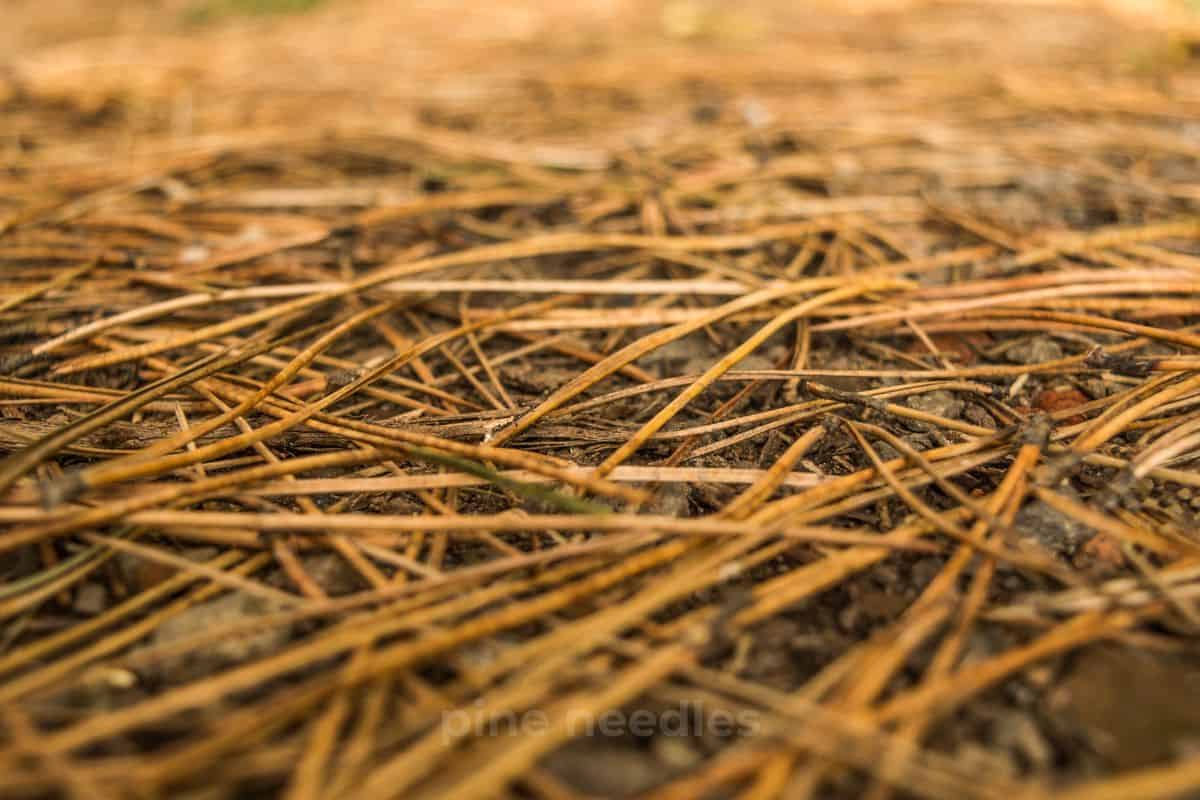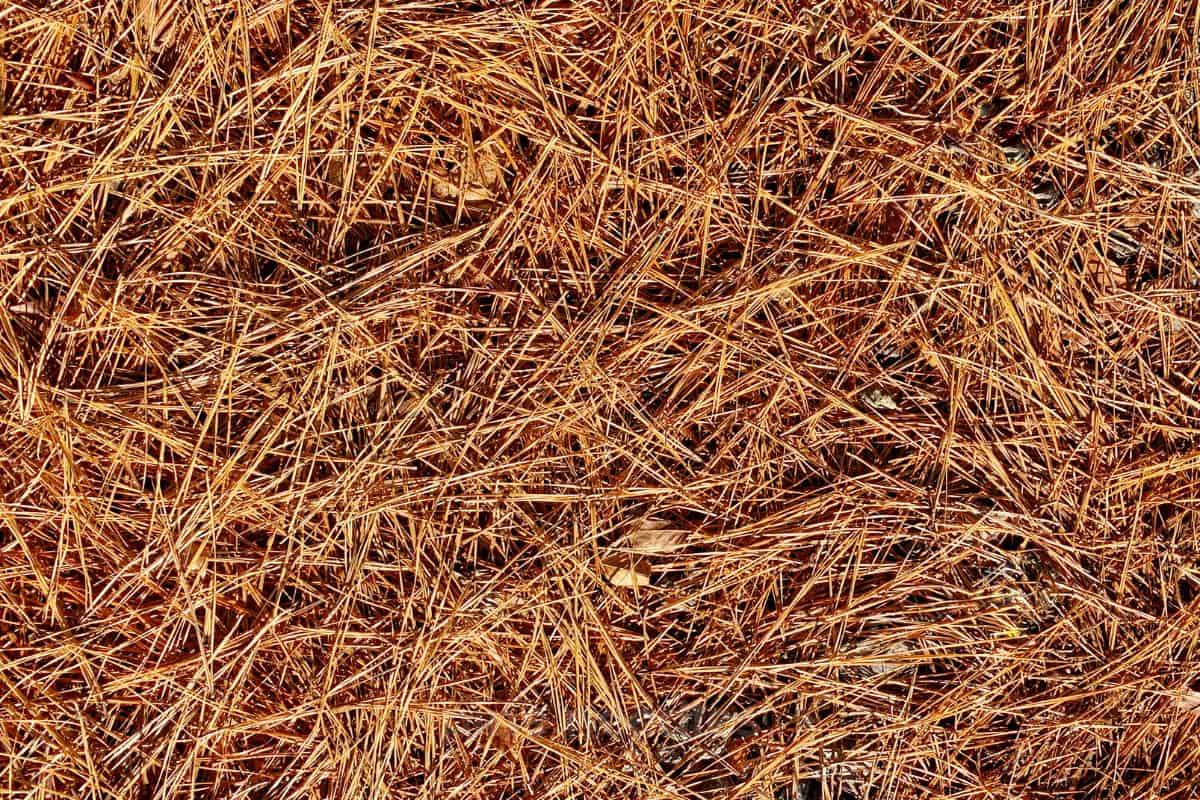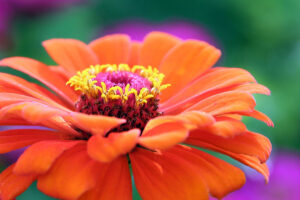This page may contain affiliate links. If you click and buy, we might get a small commission at no cost to you.
Pine needles, often called pine straw, are a common mulch material in many parts of the U.S. They’re lightweight, natural, and easy to apply, making them popular with homeowners who want a simple ground cover solution. But are they a practical replacement for grass?
In this article, we’ll look at the pros and cons of using pine needles as a ground cover, how long they last, which types are best, and what kinds of plants grow well with them. We’ll also give a final verdict on how they stack up as a lawn alternative.
Can you use pine needles as a ground cover?
Yes, pine needles can be used as a ground cover, especially in low-traffic areas like garden beds, borders, or sloped terrain. They suppress weeds, retain moisture, and break down slowly over time. However, they are not ideal for areas where you walk frequently, and they may pose a fire risk in dry climates. Overall, pine needles are a low-maintenance and cost-effective option for specific yard conditions but are not a full substitute for grass in most situations.
Pros of using pine needles as ground cover
- Natural and biodegradable
- Helps soil retain moisture
- Suppresses weed growth
- Lightweight and easy to spread
- Long-lasting compared to leaves or grass clippings
- Interlocks well on slopes and uneven areas
- Often free if you have pine trees nearby
Cons of using pine needles as ground cover
- Slightly acidic, which limits which plants you can grow
- Not walkable like grass or dense ground cover plants
- Can shift or blow away if not contained with edging
- May not match more polished landscape styles
- Fire hazard in dry regions
- Needs to be refreshed every 6–12 months
What types of pine needles are best?
Longleaf pine needles are the top choice because they’re longer, more durable, and create a better matting effect. Slash pine and loblolly pine needles are also used, especially in the southeastern U.S. These are often sold in bales at garden centers, but homeowners with pine trees can collect their own.
How long do pine needles last as ground cover?
Pine needles typically last between 6 and 12 months, depending on climate and conditions. They decompose slowly and break down into the soil over time. In wetter or high-wind areas, you may need to add fresh layers once or twice per year to maintain effective coverage and appearance.
Which plants grow well with pine needle mulch?
Pine needles are slightly acidic, so they pair well with acid-loving plants like:
- Azaleas
- Blueberries
- Gardenias
- Hydrangeas
- Rhododendrons
- Camellias
- Hostas
- Ferns
Avoid using pine needles near plants that prefer alkaline or neutral soil.
Where to get pine needles
There are two main ways to get pine needles for ground cover: collecting them yourself or buying them in bales.
1. Collecting your own pine needles

If you have pine trees on your property, you can rake up the fallen needles and use them as mulch. This is the most cost-effective option. Pine needles usually drop in the fall, but many species shed year-round. To collect them:
- Rake when the needles are dry
- Shake off excess leaves and debris
- Let them dry completely before spreading
- Store them in breathable bags if not using immediately
This method is free but limited to what your trees produce.
2. Buying pine needles (pine straw)
Pine straw is sold in bales at garden centers, landscaping suppliers, farm stores, and even some big box retailers. It’s usually labeled as “longleaf pine straw” or simply “pine needle mulch.” You can also buy in bulk through landscaping companies.
Price range:
- $5 to $8 per bale (covers roughly 40–50 square feet at 2-inch depth)
- $30 to $40 per 100 sqft for full coverage
- Delivery fees may apply for large orders
Compared to some other ground covers:
| Ground cover type | Cost per 100 sq ft (est.) | Notes |
|---|---|---|
| Pine needles (baled) | $30–$40 | Affordable, natural, easy to apply |
| Mulch (shredded wood) | $35–$60 | More decorative, breaks down faster |
| Gravel/stone | $100–$150+ | Permanent, higher upfront cost |
| Sod | $250–$350+ | Walkable but high maintenance |
| Ground cover plants | $50–$150+ | Takes time to establish |
Overall, pine needles are one of the cheapest ground cover options available, especially if you can collect them yourself. Even when purchased, they’re typically less expensive than most alternatives and easy to refresh as needed.

Verdict: Is pine needle mulch a good alternative to grass?
Rating: 7.5/10
Pine needles work well as a ground cover in specific use cases… particularly for shaded areas, around acid-loving plants, or on slopes where grass won’t grow. They’re low-cost, suppress weeds, and are easy to apply.
However, they’re not walkable, don’t work well in high-traffic areas, and can be a fire hazard in dry climates. For homeowners looking for a natural, low-effort solution in the right conditions, pine needles are a solid choice… but may not be a true one-to-one grass replacement for everyone.



